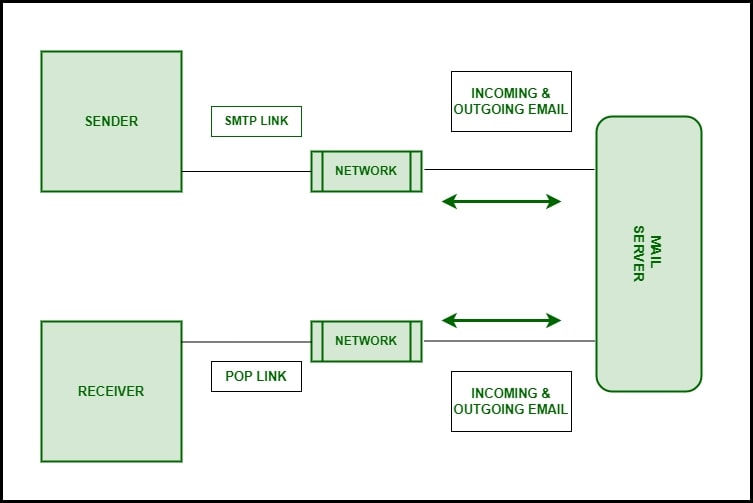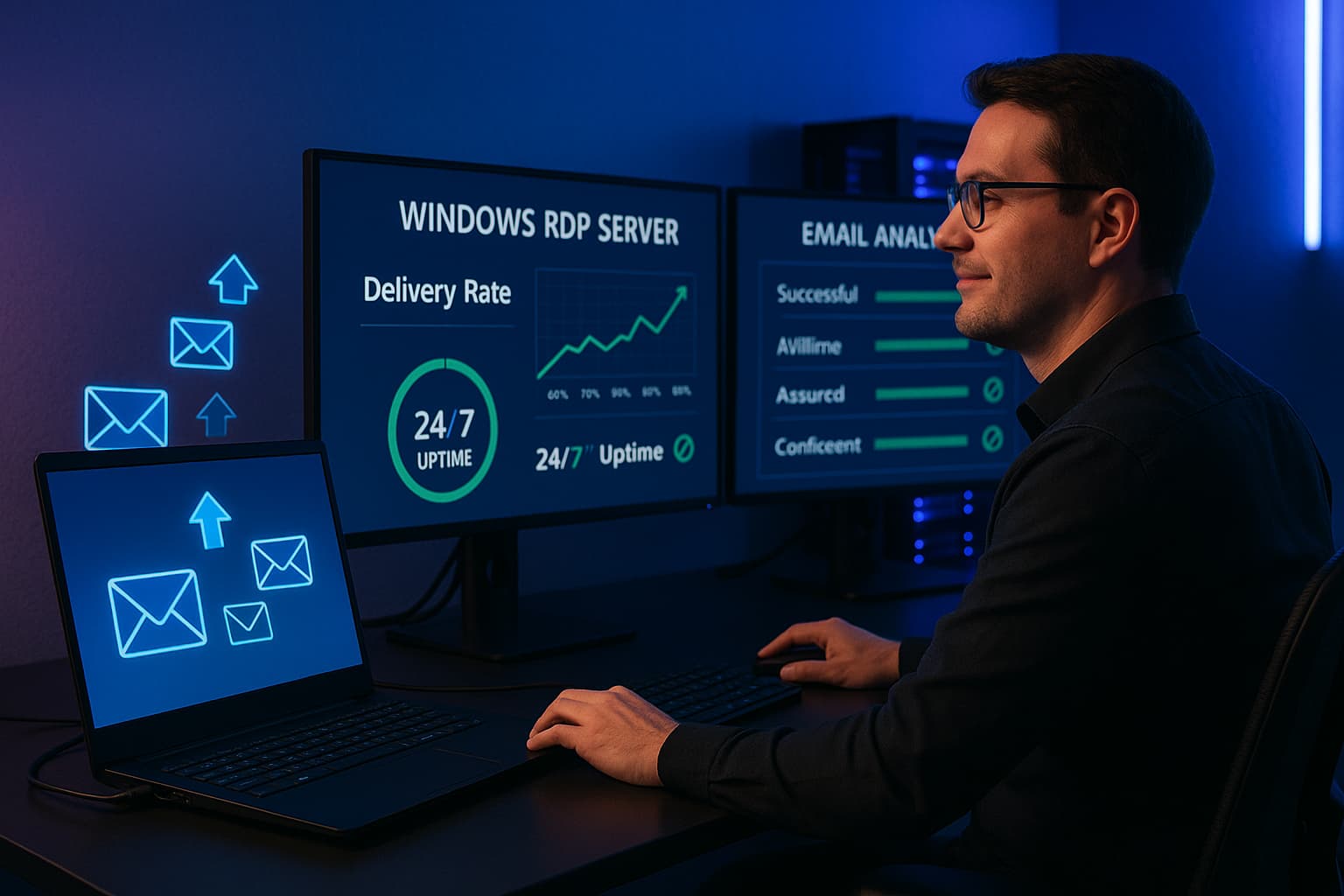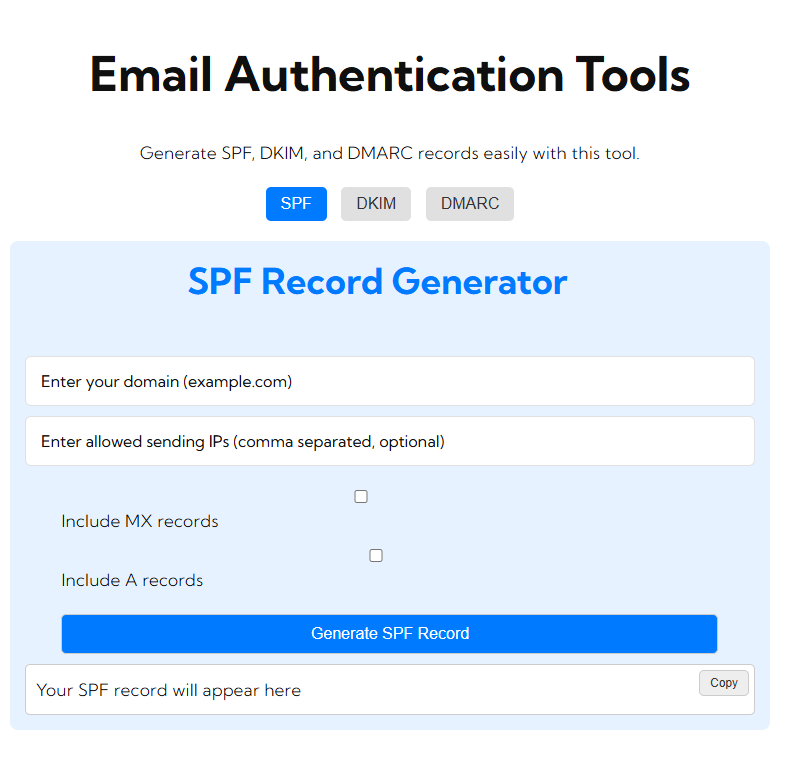Amongst the popular ways of mass communicating is through email marketing(SMTP server for mass email). Whether it is a business promoting its products or a nonprofit writing to its followers, there remains a tremendous level of importance about how to reach them through a mass email communication. More than often, it is the SMTP servers that power technology behind sending out all that bulk emails.
An SMTP server is a kind of service that supports e-mail communication. What does it do to help in sending out mass emails? The benefits and how to best follow the protocols in making sure your email campaigns are a success.
What is an SMTP Server?
SMTP stands for Simple Mail Transfer Protocol. In other words, SMTP is the way emails are sent and received. An SMTP server is thus a tool that somehow gets your e-mails from your computer or your email marketing software into recipients’ inboxes: it’s basically the backbone of all e-mail communication.
A majority of businesses use dedicated or third-party SMTP servers to send hundreds and thousands of emails to their subscribers in the process of sending bulk emails. Such servers are optimized in a way that would enable the large volumes of emails to penetrate email lines without getting flagged as spam or being blocked by the ISPs.
How Does an SMTP Server Work for Mass Email?
Magic does not occur everywhere. It so happens that as soon as you click the send button on an email, the actual process of an SMTP server goes like this:

Email Composition: You write your email by utilizing an email marketing platform or using bulk email software.
SMTP Server Connection: As soon as you click the send button, the mail is transmitted to the SMTP server that processes and then sends it to the right recipient server.
Authenticity and Encryption: The mail sending process through an SMTP server confirms the integrity of the message and also protects the mail by authenticating using SPF, DKIM, and SSL/TLS.
Delivering into the inbox: The recipient’s mail server receives the email, either delivering it to the inbox or spam folder due to several factors that involve quality of content, reputation, and sender score.
Track delivery, opens, clicks, bounced: Advanced SMTP servers track the delivery of the email; from there, they track any opens as well as clicks, and they manage the bounced emails that come back due to an invalid address, perhaps server problems.
Benefits of Using an SMTP Server for Mass Email
1. Better Deliverability
SMTP servers are designed to send high numbers of messages without getting spam flagged. Therefore, it is quite probable that your emails will come through their inboxes rather than marking them as junk.
2. Bulk Email Capability
A daily limit of sending emails is present in most free standard email platforms like Gmail or Outlook. With an SMTP server, you are enabled to bypass that and be able to send thousands (even millions) of emails all at once.
3. Customization and Personalization
SMTP servers make it easier to customize your bulk emails. Personalizing emails with the recipient’s name or previous purchases improves engagement even when sending large volumes.
4. Advanced Tracking and Analytics
Many SMTP servers can provide you with tracking capabilities so that you can track your emails. To know the performance of your campaign, you are in view of the following metrics: opens, click-throughs, and bounces.
5. Cost-Effective
The use of an SMTP server for mass emailing is much cost-effective compared to traditional marketing. A large audience can be reached at a lower cost compared to other channels of advertisement and is, therefore, quite suited for small as well as large enterprises.
Types of SMTP Servers for Mass Email
There are many SMTP servers with which you can work for mass emailing.
1. Dedicated SMTP Server
This is yours exclusively. In this way, complete control over email sending is ensured, and no one else has to share bandwidth or IPs with you. This is meant to work best for businesses that send a volume of emails in one day.
2. Shared SMTP Server
In using a shared SMTP server, you share a server with other users. In most cases, it is cheaper, but there is an adverse effect of using a shared IP address because of delivery rates for email due to low IP reputation.
3. Cloud-Based SMTP Service
Third-party services are these, which manage your mass email campaigns without giving you a headache of disturbing the server infrastructure. Examples include Amazon SES, SendGrid, and Mailgun. They are known to scale well and can easily integrate most email marketing platforms.
Best Practices for Successful Mass Email Campaigns with SMTP Servers
To achieve a successful mass email campaign, here are some best practices:
1. Use Double Opt-In for Your Subscribers
Collect e-mail addresses only after using the double opt-in process. This is where, after someone has signed up to your e-mail list, they receive a confirmation e-mail confirming them for that subscription. Only interested people will be on your list this way and will help avoid spam complaints.
2. Segment Your E-mail List
Segmentation: This will allow you to target a specific type of group within your email list-by demographics, purchase history, level of engagement, etc. Relevant, compelling content to smaller, segmented lists can’t help but boost open and click-through rates.
3. Clean Up Your Email List
Regular cleaning of your email list helps you get rid of inactive or invalid email addresses. This subsequently reduces your bounce rates and works well for your sender reputation.
4. Monitor Bounce and Complaint Rates
High bounce or complaint rates may act as deliverability poison for you. Most SMTP servers have built-in tools to manage bounces, unsubscribes, and complaints. You must always take steps to address such problems promptly.
5. Personalize Your Messages
Personal messages are more interesting. Using merge tags, add the name of the recipient and other information, like the purchase history. Even if a campaign is set to send mass messages, this small detail makes a lot of difference.
6. Mobile Optimization
A majority of people check their email on mobile devices, and your emails must be optimized enough to open on mobile use. Use less large images as these take time to load into an email.
7. Testing
Test it in a variety of devices and e-mail clients before letting it loose into the world. So it’ll display correctly and not marked as spam.
8. Monitoring Your IP Reputation
If you do decide to deploy a dedicated SMTP server, be aware of your IP address reputation. A bad IP address reputation may lead to blocking of your emails by ISPs; ensure that you are monitoring your IP frequently by using tools such as Sender Score or Postmaster Tools by Google.
Why Choose an SMTP Server Over Regular Email Platforms?
You may ask, why not just use an email service such as Gmail or Yahoo for a mass email campaign? The reason is: no sending limits with an SMTP server.
- Typically, a free email service, such as Gmail or Yahoo, limits the number of emails that you can send out daily. You might see a reference to this in their terms of services. For instance, with Gmail, you’re only allowed to send out 500 emails per day. No such limit exists when using an SMTP server.
- Better Deliverability: SMTP servers are designed to enhance deliverability for the email. They also prevent your email from appearing in spam folders because they provide verified IP addresses and best practices.
- Tracking and Analytics: Gmail and Yahoo do not provide advanced tracking, but the SMTP server offers advanced tracking features which provide a much better view of the performances of the email, thereby enabling you to adjust your campaigns according to the end outcomes.
Conclusion
Using an SMTP server for mass emailing could reach thousands of audiences efficiently. What you’re sending over e-mail matters not it may be a newsletter, a promotional offer, or just a customer update; an SMTP server makes sure that your e-mail reaches faster and is more reliably delivered. By using a suitable balance of server configuration, correct list management, and perfect practices, you are in for a guarantee to increase the deliverability of emails, boost engagement, and achieve marketing goals.
With these best practices in your mind, rest assured that your campaign will be a success in the long term.






